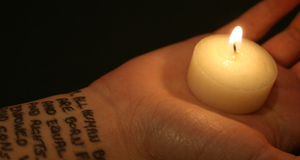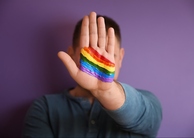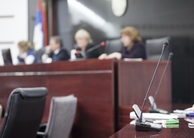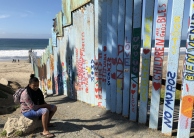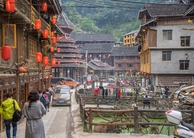Featured Article:Mob Violence Against Women in Algeria: A Historical Case Analysis
By
2015, Vol. 7 No. 03 | pg. 3/3 | « In Algeria, Domestic Non-Government Organizations (NGO’s) have compiled a number of reports on reported acts of violence against women (Mayar, 1995). These reports have shown an increase in the physical violence against women according to the Algiers-based Center of Information and Documentation on the Rights of Women and Children (AIDRWC) (Lezzar 2009). Compiled data finding, in 2009, showed that the Algerian police had registered complaints of violence against women totaling over 9,517 (U.S. Department of State, 2011). It has also been noticed that there is a lack of funding from the government for rape crises centers, led by women’s groups, as well as other centers focusing on aiding women who have been victims of violence (Zuhur, 2003). The need for women’s centers is in high demand and has those that do exist often have difficulties in meeting the needs of victims (Lazreg, 1988). Algerian women originally had access to two local call centers. However, due to minimal government funding one of them, by the name of Batna, was closed (Kristianasen, 2006). It was reported that within the first eight months of the year, the only call center left standing, ran by SOS Femmes en Detresse, and received more than 2,500 calls by women in need of support (Kristianasen, 2006). Resources, provided by the government, for women’s services, continue to remain limited. Local women’s NGO’s in Algeria, such as SOS Femmes en Detresse, the Wassila Network, Bent Fatma N’Soumer, have played a large role in speaking out on the issue of violence against women (U.S. Department of State, 2011). Many women’s groups within Algeria have been successful in accomplishing forms of independence (i.e. the workforce), but have experienced a large amount of difficulty in drawing much needed attention to the issue of violence against women as a social problem because of the competing traditional social attitudes held (Holt, 2003). The difficulty with women’s rights has not been the same in all areas of Algeria (Charrad, 2001; Mayar, 1995). Urban areas were more likely to show social support and encouragement of women who sought higher education (Moghadam, 1991). Some areas showed that the number of girls graduating from high school were greater than boys (U.S. Department of State, 2011).Recent statistics have shown an increased number of women diverting from traditional gender roles within the public sphere (Afary, 1997; Moghadam, 2003). Despite the advancement of women’s roles, in Algeria, women failing to comply with Islamist dictates are continuously targeted by the FIS and are seen as a symbol of opposition (Faksh, 1997; Nagel, 1998). Feminists, therefore, are viewed as representing a critical component in the resistance to the fundamentalist leadership. The literature devoted to the Algerian feminist movement continues to be sparing, as articles covering the current issues begin to disappear (Bouatta, 1997; Mishra, 2007). The attempts made to understand the status of women becomes harder to obtain and only achievable through direct contact with feminists or women participating within the Algeria women’s movement (Bayat, 2003; Lazreg, 1988). Women’s organizations continue to have profound effects on the democratic movement, contributing significantly to Algerian civil society as a whole (Lezzar 2009). ConclusionLooking at the history of Algeria as well as the socio-economic and political landscape within the country provides a lens into the cultural construction of gender taking place there. Internal and external factors have contributed to previous and recent mob attacks on women, which must be considered in their broader context. The scope of law, violence, and social gendered positions effecting women are essential elements in the formation of the recent acts of male violence against women in Algeria. In particular, the Hassi Massudi mob attacks that specifically targeted women were part of a deeper structural issue that is closely related to the historical and cultural development of the social perceptions of women. These violent acts committed against women in Algeria are by no means accepted or tolerated by all men within this area. Acts of violence targeting women are only the actions reflecting the views of a select few Algerian people (Islamic Extremists). From colonial penetration, to political instability, the amplification of traditional order has used violence as a method in maintaining a sense of stability in an otherwise unstable society. ReferencesAbu-Haidar, F., & Amrane, D. (1999). Women and Politics in Algeria from the War of Independence to Our Day. Research in African Literatures, 30(3), 62-77. Afary, J. (1997). The War against Feminism in the Name of the Almighty: Making Sense of Gender and Muslim Fundamentalism. New Left Review. 89-110. Afsaruddin, A., & A., Ameri. (1999). Hermeneutics and Honor: Negotiating Female Public Space in Islamic/ate Societies (Vol. 32). Harvard CMES. Anis A., (2010, December 2). Le Cauchemar Des Femmes Lynchées d'el Haïcha, L'Express. Bayat, A. (2003). The “Street” and the Politics of Dissent in the Arab World. Middle East Report, 33 (1; ISSU 226), 10-17. Bennoune, K. (1995). Women Living under Muslim Laws: Femmes Sous Lois Musulmanes. London: I.B. Tauris & Co Ltd. Bourouh, O. (2004). Globalization, Deindustrialization and Labor Market Structure in Algeria. The International Journal of Interdisciplinary Social Sciences. no. 5: 1-8. Bouatta, C. (1997). Evolution of the Women's Movement in Contemporary Algeria: Organization, Objectives, and Prospects. UNU World Institute for Development Economics Research (UNU/WIDER). Brumberg, D. (1991). Islam, Elections, and Reform in Algeria. Journal of Democracy, 2(1), 58-71. Carapico, S. (2002). Foreign Aid for Promoting Democracy in the Arab World. The Middle East Journal, 379-395. Charrad, M. (1990). State and Gender in the Maghrib. Middle East Report, 163, 19-24. Charrad, M. (2001). States and Women's Rights: The Making of Postscolonial Tunisia, Alegeria, and Morocco. University of California Pr. Cheref, A. (2006). Engendering or Endangering Politics in Algeria? Salima Ghezali, Louisa Hanoune, and Khalida Messaoudi. Journal of Middle East Women’s Studies, 2(2), 60-85. Cohen, W. B. (2000). The Algerian War and French Memory. Contemporary European History, 9(3), 489-500. Faksh, M. A. (1997). The Future of Islam in the Middle East: Fundamentalism in Egypt, Algeria, and Saudi Arabia. Greenwood Publishing Group. Galadari, A. (2012). Behind the Veil: Inner Meanings of Women’s Islamic Dress Code. The Journal of Interdisciplinary Social Sciences, 6(11), 115-125. Glasse, C. (2008). Concise Encyclopedia of Islam. Rowman & Littlefield. Hafez, M. (2000). Armed Islamist Movements and Political Violence in Algeria. The Middle East Journal, 572-591. Hatem, M. (1986). The Enduring Alliance of Nationalism and Patriarchy in Muslim Personal Status Laws: The Case of Modern Egypt. Gender Issues, 6(1), 19-43. Hensman, R. (1995, April 22). Fascism, Democratic Rights and the State. Economic and Political Weekly, 1260-1263. Holm, U. (2005). Algeria: President Bouteflika’s Second Term. Mediterranean Politics, 10(1): 117-122. Holt, M. (2003). Palestinian Women, Violence, and the Peace Process. Development in Practice, 13(2-3), 223-238. Horne, A. (2012). A Savage War of Peace: Algeria 1954-1962. Pan Macmillan. Jansen, W. (2004). The Economy of Religious Merit: Women and Ajr in Algeria. The Journal of North African Studies, 9(4), 1-17. Joffé, G. (2002). The Role of Violence Within the Algerian Economy. The Journal of North African Studies, 7(1), 29-52. Kelly, S., & Breslin. J., (2010). Women's Rights in the Middle East and North Africa: Progress Amid Resistance. United Kingdom: Freedom House. Kristianasen, W. (2006 April). Truth & Justice after a Brutal Civil War-Algeria: The Women Speak. Le Monde. Lazreg, M. (1988). Feminism and Difference: The Perils of Writing as a Woman on Women in Algeria. Feminist Studies, 14(1), 87-107. Lezzar N. E. (2009, September 3). Affaire des femmes de Hassi Messaoud: le process: Revue d’Etudes et de critiques. El Watan. Lloyd, C. (1999). Organising Across Borders: Algerian Women's Associations in a Period of Conflict. Review of African Political Economy, 26(82), 479-490. Lloyd, C. (2002). Thinking about the Local and the Global in the Algerian Context. Oxford Development Studies, 30(2), 151-163. Lloyd, C. (2003). Multi-causal Conflict in Algeria: National Identity, Inequality and Political Islam. Queen Elizabeth House, University of Oxford. Lloyd, C. (2006, October). From Taboo to Transnational Political Issue: Violence against Women in Algeria. Women’s Studies International Forum. (Vol. 29, No. 5, pp. 453-462). Pergamon. Majumdar, M., & M., Saad. (2005). Transition & Development in Algeria: Economic, Social and Cultural Challenges. United Kingdom: Intellect Books. Marpsat, M. (2000). An Advantage with Limits: The Lower Risk for Women of Becoming Homeless. Population: An English Section. 247-291. Masmoudi, R. (2003). The Silenced Majority. Journal of Democracy, 14(2), 40-44. Mayer, A. E. (1995). Cultural Particularism as a Bar to Women’s Rights: Reflections on the Middle Eastern Experience. Women’s Rights, Human Rights: International Feminist Perspectives, 176-88. Metz, H. C. (Ed.). (1994). Algeria, A Country Study. Federal Research Division Library of Congress. Miller, J. (2011). God Has Ninety-Nine Names: Reporting from a Militant Middle East. Simon and Schuster. Mir-Hosseini, Z. (2006). Muslim Women’s Quest for Equality: Between Islamic Law and Feminism. Critical Inquiry. no. 4: 629-645. Mishra, S. (2007). Saving Muslim Women and Fighting Muslim Men: Analysis of Representations in the New York Times. Global Media Journal, 6(11), 1-20. Moghadam, V. (1991). Islamist Movements and Women's Responses in the Middle East. Gender & History, 3(3), 268-286. Moghadam, V. (2000). Transnational Feminist Networks Collective Action in an Era of Globalization. International Sociology,15(1), 57-85. Moghadam, V. M. (2001). Organizing Women: The New Women's Movement in Algeria. Cultural Dynamics, 13(2): 131-154. Moghadam, V. M. (2003). Modernizing Women: Gender and Social Change in the Middle East. Lynne Rienner Publishers. Moghadam, V. M. (2005). Globalizing Women: Transnational Feminist Networks. JHU Press. Mortimer, R. (1991). Islam and Multiparty Politics in Algeria. The Middle East Journal, 45(4): 575-593. Mortimer, R. (1996). Islamists, Soldiers, and Democrats: The Second Algerian War. The Middle East Journal. 18-39. Nagel, J. (1998). Masculinity and Nationalism: Gender and Sexuality in the Making of Nations. Ethnic and Racial Studies, 21(2), 242-269. Nair, R. (1998). Confronting the Violence Committed by Armed Opposition Groups. Yale Human Rights & Deviance Law Journal, 1, 1-16. Pereira, A. (2012). Social Representations of Violence against Women in Algeria. Master's thesis, University of Helsinki. Quandt, W. B. (2004). Algeria, 1830-2000: A Short History. Cornell University Press. Roe, M. (1992). Displaced Women in Settings of Continuing Armed Conflict. Women & Therapy, 13(1-2), 89-104. Salhi, Z. S. (2003). Algerian Women, Citizenship, and the ‘Family Code'. Gender & Development, 11(3), 27-35. Salome, L. J. (2010). Violence, Veils, and Bloodlines: Reporting from War Zones. McFarland. Shinar, P. (2004). Modern Islam in the Maghrib (Vol. 3). JSAI. Siegfried M. & H., Ait K. (2010, April 27). Who Will Save the Women of Hassi Messaoud? Monsters and Critics. Skalli, L. (2006). Communicating Gender in the Public Sphere: Women and Information Technologies in the MENA Region. Journal of Middle East Women’s Studies, 2(2), 35-59. Slyomovics, S. (1995). Hassiba Ben Bouali, If You Could See Our Algeria: Women and Public Space in Algeria. Middle East Report, (192), 8-13. Spencer, R., & Chesler, P. (2007). The Violent Oppression of Women in Islam. Los Angeles: David Horowitz Freedom Center. Marshall, S. E., & Stokes, R. G. (1981). Tradition and the Veil: Female Status in Tunisia and Algeria. The Journal of Modern African Studies, 19(04), 625-646. Stone, M. (1997). The Agony of Algeria. Columbia University Press. The Dossiers (2000). Dossier 23/24 Women Living under Muslim Laws. United Kingdom: The Dossiers. Turshen, M. (2002). Algerian Women in the Liberation Struggle and the Civil War: From Active Participants to Passive Victims?. Social Research: An International Quarterly, 69(3), 889-911. Turshen, M. (2004). Militarism and Islamism in Algeria. Journal of Asian and African Studies, 39(1-2), 119-132. U.S. Department of State (2011). 2010 Human Rights Report: Algeria. United States: Bureau of Democracy, Human Rights, and Labor. Vrdoljak, F. A. (2013). Women, PMSCs and International Law, Gender and Private Force in Global Politics. Oxford: Oxford University Press. W. L. U. M. (2000). Laws, Algeria: Ordinary Fascism, Fundamentalism and Femicide. Women living under muslim laws Femmes sous lois musulmanes, 137. Woodhull, W. (1991). Unveiling Algeria. Genders, (10), 112-131. Zack, L. (2002). Who Fought the Algerian War? Political Identity and Conflict in French-Ruled Algeria. International Journal of Politics, Culture, and Society, 16(1), 55-97. Zuhur, S. (2003). Women and Empowerment in the Arab World. Arab Studies Quarterly. no. 4: 17-38. Suggested Reading from Inquiries Journal
Inquiries Journal provides undergraduate and graduate students around the world a platform for the wide dissemination of academic work over a range of core disciplines. Representing the work of students from hundreds of institutions around the globe, Inquiries Journal's large database of academic articles is completely free. Learn more | Blog | Submit Latest in Law & Justice |









